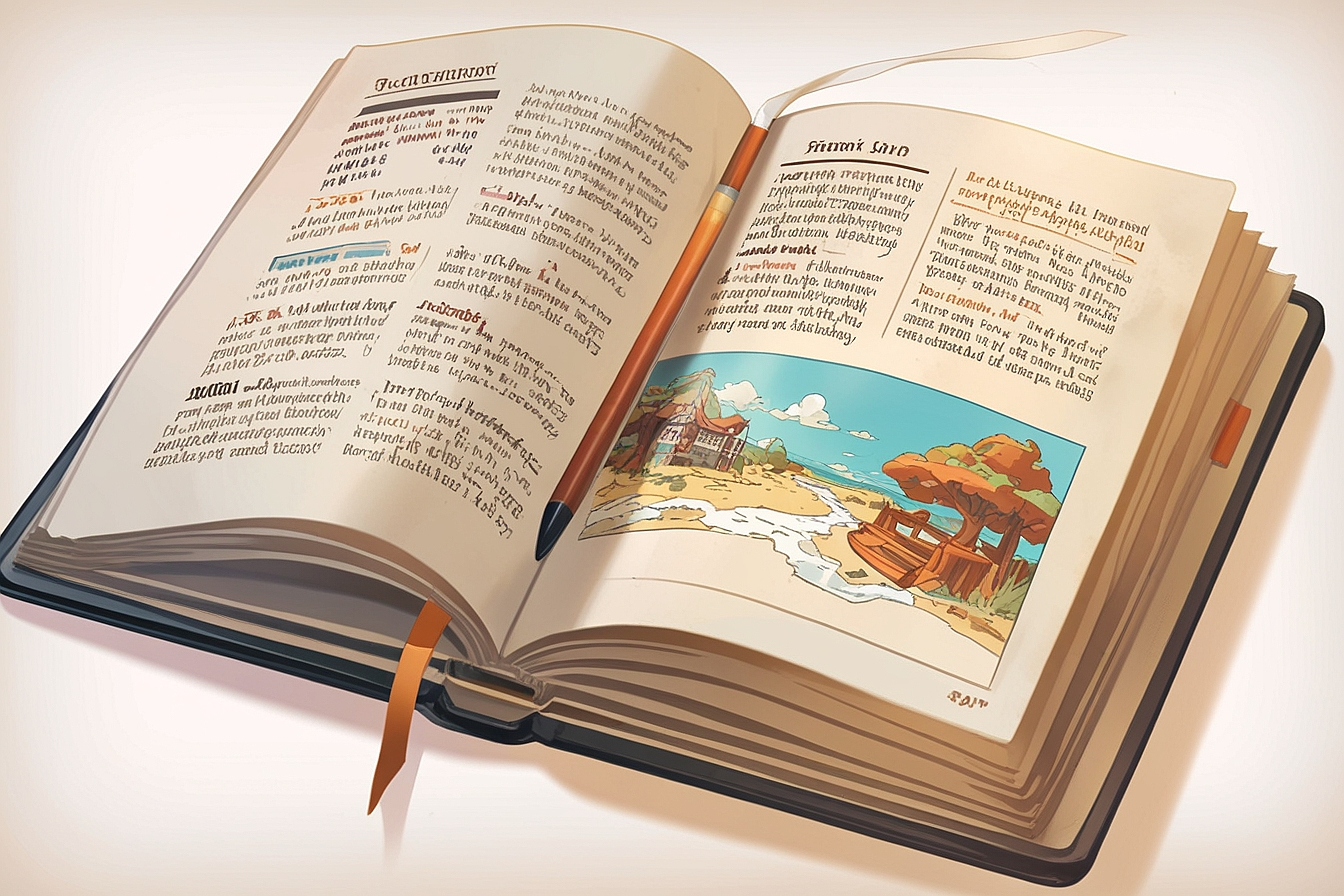Life is often described as a crazy ride called life, full of unexpected twists and unexpected turns. For those deeply invested in personality typing, understanding how different personality types mesh in relationships can feel just as unpredictable. Imagine two people, one INFJ and one ESTP, sitting on a bench overlooking a sunset. On the surface, they might seem like an unlikely pair, given their fundamental differences. The INFJ, often lost in thought, deeply values their inner world of ideas and emotions. In contrast, the ESTP lives vibrantly in the present moment, always ready for action and adventure.
This post delves into the heart of such a dynamic, exploring the INFJ and ESTP compatibility. It’s more than just exploring a relationship; it’s about understanding how two seemingly opposite individuals can navigate all that life throws their way. Whether you’re an INFJ or an ESTP, or simply someone fascinated by personality types, join me as we decode the magic and mayhem of this pairing. Can these two personalities, one deeply reflective and the other action-oriented, find common ground? Or are they doomed to misunderstand each other’s core focus and needs? The INFJ’s structured approach to life often contrasts with the ESTP’s laid back lifestyle, leading to potential conflicts and compromises related to organization, scheduling, and daily routines. Despite these differences, they can be a perfectly compatible pair, balancing each other out in unique ways.
Let’s find out together how this crazy ride called an INFJ-ESTP relationship unfolds, and perhaps, you might discover something about your own self knowledge and own desire for connection.
Understanding INFJs
INFJs are known for being introverted, intuitive, feeling, and judging. This combination of traits shapes how they interact with the world and other people. Due to their idealistic and empathetic nature, INFJs can sometimes get caught up in their imagination and lose track of real life.
Core Characteristics
Introverted: INFJs enjoy time alone. They recharge their energy by being by themselves, not in big groups.
Intuitive: They focus on the future. INFJs often think about what might happen and enjoy looking at the big picture.
Feeling: Emotions are important to INFJs. They make decisions based on what they feel is right or wrong.
Judging: INFJs like to have plans. As an organized person, they feel more comfortable when things are decided and organized.
How INFJs Perceive the World and Make Decisions
INFJs use their intuition to see beyond the present. They often understand deeper truths about life and people. When making decisions, INFJs think about how their choices will affect others’ feelings and the harmony of the group. They look for meaningful connections in all areas of life.
Strengths and Weaknesses in Relationships
Strengths:
- Empathy: INFJs are very caring. They can understand other people’s feelings easily.
- Commitment: When INFJs care about someone, they are very loyal and dedicated.
- Insight: They often know what others need emotionally and how to support them.
Weaknesses:
- Sensitivity: INFJs can be very sensitive to criticism or conflict.
- Need for Privacy: Sometimes they need a lot of alone time, which can be hard for others to understand.
- Idealism: INFJs might expect too much from relationships because they often idealize them.
Understanding these traits helps us see how INFJs might interact with others, especially with personality types that are very different from their own, like ESTPs.
Understanding ESTPs

ESTPs are characterized by their extroverted, sensing, thinking, and perceiving traits. These features influence their behavior and how they connect with others. ESTPs prefer a more laid-back lifestyle compared to INFJs, who tend to be more structured and goal-oriented.
Core Characteristics
1. Extroverted: ESTPs are outgoing and social. They gain energy from being around other people.
2. Sensing: They focus on the present and rely on their senses. ESTPs prefer dealing with concrete facts rather than abstract ideas.
3. Thinking: Decisions are based on logic and reason for ESTPs. They value practical outcomes and efficiency.
4. Perceiving: ESTPs enjoy flexibility. They like keeping their options open and feel restricted by too many rules.
ESTP’s Approach to Life and Interactions in the Present Moment
ESTPs are action-oriented and love adventure. They adapt quickly to new situations and are often looking for the next exciting experience. In interactions, ESTPs are straightforward and prefer direct communication. They are often very observant, noticing details that others might miss, and use this information to stay one step ahead.
Strengths and Weaknesses in Relationships
Strengths:
Adaptability: ESTPs are great at adjusting to change and can handle unexpected situations with ease.
Charm: They are charismatic and can be very persuasive, making them popular in social situations.
Practicality: ESTPs are good at solving practical problems and can make decisions quickly.
Weaknesses:
Impulsiveness: Their desire for excitement can sometimes lead them to make hasty decisions without considering the consequences.
Conflict with Commitment: ESTPs’ need for freedom can clash with committing deeply in relationships. They are willing to give up a few gold stars in favor of a more relaxed and carefree approach to life.
Insensitivity: Their focus on logic over feelings can sometimes make them seem insensitive to the emotional needs of others.
By understanding these traits, we gain insight into how ESTPs might interact within relationships, particularly with contrasting types like INFJs, creating both opportunities and challenges for connection.
Key Differences

The relationship dynamics between INFJs and ESTPs can often be complex due to their contrasting personalities. Understanding their key differences, especially in communication, decision-making, and social preferences, is crucial. Differences in organization and scheduling can also be a significant sticking point in their relationship.
Contrast in Communication Styles
- INFJs: They communicate in an indirect, often metaphorical way, focusing on emotions and underlying meanings. INFJs prefer deep, meaningful conversations and may take time to open up.
- ESTPs: In contrast, ESTPs are direct and to the point. They prefer practical, straightforward communication and often seek immediate results from conversations.
This difference can lead to misunderstandings, as INFJs might find ESTPs too brash, while ESTPs might view INFJs as overly complicated or elusive.
Fundamental Differences in Decision-Making Processes
INFJs: They make decisions based on their values and how outcomes affect people emotionally. INFJs consider the long-term impact and strive for decisions that align with their idealistic goals. They often base their choices on their own preference for emotional harmony and meaningful achievements.
ESTPs: They rely on logical analysis and immediate facts, making decisions quickly and adapting as situations change. ESTPs are pragmatic and focus on what is practical and feasible in the here and now.
These divergent approaches can create friction, as INFJs may perceive ESTPs as impulsive, while ESTPs might see INFJs as overly cautious or detached from reality.
Social Needs and Preferences
- INFJs: Prefer small, intimate gatherings and deep connections with a few people. They need significant alone time to recharge and reflect on their thoughts and feelings.
- ESTPs: Thrive in energetic, social environments and enjoy being at the center of action. They prefer a wide circle of acquaintances and minimal alone time.
This difference in social needs can lead to tension in relationships. INFJs might feel overwhelmed by the ESTPs’ social lifestyle, while ESTPs might feel restricted by the INFJs’ need for privacy and quiet.
Understanding these key differences can help INFJs and ESTPs appreciate and navigate their unique dynamics, fostering better communication and mutual respect despite their inherent contrasts.
Key Similarities

Despite their differences, INFJs and ESTPs share certain values and characteristics that can form the basis for mutual respect and admiration. Recognizing these similarities can help bridge the gap between their distinct personalities.
Shared Values or Goals That May Align
- Growth and Development: Both INFJs and ESTPs value personal growth, though their approaches may differ. INFJs seek emotional and psychological growth, while ESTPs focus on skills and experiences. This shared value can lead to a supportive dynamic where each encourages the other to pursue their version of personal development.
- Action-Oriented Goals: While INFJs are more contemplative, they still value concrete outcomes, which aligns with the ESTPs’ preference for action and results. Both can come together on projects or goals that require both planning and execution, providing a balance of thought and action.
Possible Areas of Mutual Respect and Admiration
- Adaptability and Resilience: INFJs admire the ESTPs’ ability to stay adaptable and resilient in changing circumstances, a trait that INFJs often find challenging but essential. ESTPs can inspire INFJs to become more flexible and less affected by external changes.
- Depth of Insight: On the other hand, ESTPs can greatly respect INFJs for their deep insight into human emotions and motivations. INFJs can offer a profound understanding of situations that ESTPs might overlook, providing a richer perspective on interpersonal dynamics.
- Commitment to Values: Both personality types hold their values in high regard, though these values may differ. This mutual understanding of the importance of integrity and authenticity fosters a foundation of respect between them.
By focusing on these shared values and areas of admiration, INFJs and ESTPs can enhance their relationship, turning potential conflicts into opportunities for learning and appreciation. This focus helps both types to not only acknowledge their differences but also to celebrate what they have in common, paving the way for a richer, more balanced interaction.
Compatibility in Various Aspects

INFJs and ESTPs may seem like an unlikely match at first glance, but examining their compatibility across various aspects—emotional, intellectual, social, and value-based—can reveal a complex and potentially rewarding dynamic. Disagreements over physical space, such as how clean and organized the shared space needs to be, can also affect their relationship, potentially leading to imbalance and resentment if not addressed.
Emotional Compatibility: Understanding and Managing Emotional Differences
- INFJs: They process emotions deeply and often require time to understand and express their feelings. INFJs seek emotional depth and understanding in their relationships.
- ESTPs: More focused on the immediate and tangible, they may not naturally attune to emotional nuances. ESTPs tend to address emotions more pragmatically and are often more comfortable with surface-level emotional expressions.
To achieve emotional compatibility, both types need to make concerted efforts to bridge their emotional expressions. INFJs can benefit from the ESTPs’ more straightforward approach to problem-solving, while ESTPs can learn to appreciate and respect the depth of INFJs’ emotional insights.
Intellectual Compatibility: Communication Styles and Intellectual Engagements
- Communication Styles: INFJs prefer abstract and metaphorical discussions, which can clash with ESTPs’ straightforward, fact-based dialogue. However, this difference can also complement each other if both types are open to learning from one another’s perspectives.
- Intellectual Engagements: Both types enjoy intellectual stimulation but from different angles. INFJs might introduce philosophical or psychological dimensions to discussions, which can provide ESTPs with new ways of thinking about practical issues.
Social Compatibility: Balancing Social Interactions, Physical Space, and Energy Levels
- Social Needs: The extroverted ESTP enjoys large social gatherings and an active social life, while the introverted INFJ prefers quieter, more intimate settings. Balancing these needs requires flexibility and understanding from both sides.
- Energy Levels: INFJs often need downtime after social interactions to recharge, unlike ESTPs, who gain energy from being around others. Recognizing and respecting these differences in energy can help reduce potential stress in their interactions.
Value Compatibility: Aligning Life Goals and Moral Outlooks
- Life Goals: Both personality types can find common ground in their goals, particularly if they focus on areas such as improving themselves or making a positive impact on their community.
- Moral Outlooks: While their core motivations may differ, both INFJs and ESTPs often hold strong ethical beliefs. Finding alignment in these core values can provide a strong foundation for mutual respect and shared purpose.
Compatibility in these aspects isn’t automatic and requires both INFJs and ESTPs to actively work towards understanding and appreciating their differences. With patience and effort, however, these relationships can grow into profound and balanced partnerships.
Challenges in INFJ and ESTP Relationships

Relationships between INFJs and ESTPs can face several challenges due to their inherent differences in communication styles, decision-making processes, and energy levels. The more organized person in the relationship often takes on more responsibilities, leading to potential resentment and imbalance. Addressing these challenges requires a conscious effort from both partners to understand and accommodate each other.
Potential Conflicts Due to Differing Communication Styles and Energy Levels
- Communication Styles: INFJs communicate in an indirect, nuanced manner, often emphasizing emotional depth and underlying meanings. In contrast, ESTPs prefer direct, action-oriented communication, focusing on immediate issues and practical solutions. These differences can lead to misunderstandings, with INFJs feeling misunderstood or overlooked and ESTPs feeling frustrated by perceived overcomplications.
- Energy Levels: INFJs, being introverts, need significant alone time to recharge and reflect, whereas ESTPs thrive on social interaction and can quickly adapt to new stimuli. This discrepancy can strain the relationship, as INFJs might feel overwhelmed by ESTPs’ constant activity, and ESTPs might perceive INFJs as withdrawn or uninterested.
Strategies for INFJs and ESTPs to Understand and Accommodate Each Other’s Differences
1. Establish Open Communication: It’s crucial for both partners to cultivate an environment where open and honest communication is encouraged. INFJs and ESTPs should strive to express their needs and preferences clearly and without judgment.
2. Respect Individual Needs: Both partners need to respect and accommodate each other’s different energy needs. This might involve compromising on social activities, where the ESTP might occasionally opt for smaller, more intimate settings to make the INFJ comfortable, while the INFJ might sometimes participate in larger social gatherings to support the ESTP.
3. Develop Mutual Interests: Finding and engaging in activities that both enjoy can help bridge their differences. Whether it’s a shared hobby, a project, or intellectual discussions that appeal to both, these shared interests can provide common ground and opportunities for bonding.
4. Learn From Each Other: INFJs can benefit from the ESTPs’ ability to stay grounded in the present and handle practical matters efficiently, while ESTPs can learn from INFJs’ insight into emotions and long-term implications. Viewing these differences as opportunities for personal growth can transform potential conflicts into strengths.
5. Seek Understanding: Both INFJs and ESTPs should make a concerted effort to understand not just how their partner differs but why those differences exist. This deeper understanding can foster empathy, reduce conflicts, and enhance the relationship’s depth and satisfaction.
Navigating these challenges won’t be effortless, but with commitment and mutual respect, INFJs and ESTPs can build a relationship that is not only sustainable but also enriching and fulfilling.
Making It Work

For INFJs and ESTPs, achieving a harmonious relationship requires understanding, adaptation, and a lot of communication. Below are some practical tips and the importance of foundational relationship elements like communication, compromise, and mutual respect, supplemented with real-life examples of successful INFJ and ESTP partnerships.
Practical Tips for INFJs and ESTPs to Enhance Relationship Compatibility
1. Schedule Regular Check-ins: Given their differing communication styles, setting aside time for regular check-ins can help both parties express thoughts or concerns in a non-confrontational setting.
2. Create Personal Space: Acknowledge the need for personal space. INFJs should have the quiet time they need to recharge, while ESTPs should feel free to engage in more extroverted activities, sometimes separately.
3. Cultivate Patience and Flexibility: Both types should practice patience and flexibility. For example, ESTPs could be more patient with the INFJs’ need for emotional processing, and INFJs could try to be more accepting of ESTPs’ spontaneous nature.
4. Joint Problem Solving: Engage in activities that require teamwork. This can be anything from planning a trip together to taking on a home improvement project, which helps build a sense of partnership and accomplishment.
Importance of Communication, Compromise, and Mutual Respect
- Communication: Essential for resolving the misunderstandings that can frequently arise between these two types. Open, honest dialogue helps both partners feel heard and valued.
- Compromise: Vital in balancing the needs of such different personality types. This might mean agreeing on a mix of quiet and social activities that respect both partners’ preferences.
- Mutual Respect: Recognizing and valuing each other’s strengths and approaches to life can transform potential points of contention into opportunities for personal and relational growth.
Examples of Successful INFJ and ESTP Relationships
- Celebrity Partnerships: Consider the dynamic and highly successful partnerships seen in some celebrity couples, where one is rumored or confirmed to be an INFJ and the other an ESTP. These relationships often balance public engagement with private depth, showing how these types can complement each other.
- Business Partnerships: There are instances where INFJ and ESTP co-founders successfully run companies by dividing roles that suit their strengths—INFJs focusing on company vision and culture, and ESTPs handling operational activities and client interactions.
Conclusion

The journey through the complexities of INFJ and ESTP relationships reveals a landscape rich with potential challenges and rewarding opportunities. Despite their significant differences—in communication styles, decision-making processes, and social preferences—INFJs and ESTPs can forge a deeply satisfying and mutually enriching relationship.
Recap of the Complexities and Potential
INFJs and ESTPs embody contrasting personality traits that can sometimes lead to misunderstandings and frustrations. INFJs, with their depth of insight and focus on emotional connections, contrast sharply with ESTPs, who thrive on action and prioritize practical outcomes. However, these very differences can also be the foundation for growth and a broader perspective on life for both partners. When INFJs and ESTPs come together, they create a dynamic partnership that balances thoughtful reflection with energetic action.
Encouraging Exploration and Nurturing of Relationships
For those in INFJ and ESTP relationships, the key to success lies in embracing each other’s differences as opportunities for personal and relational growth. It is through understanding—not in spite of it—that such relationships flourish. INFJs can learn to appreciate the spontaneity and vigor ESTPs bring into their lives, while ESTPs can benefit from the depth and foresight that INFJs offer.
Both personality types are encouraged to actively explore and nurture their relationship. By committing to ongoing communication, demonstrating flexibility, and showing a genuine interest in learning from one another, INFJs and ESTPs can develop a strong, enduring bond. Through mutual respect and shared experiences, they can transform their initial contrasts into a powerful synergy, proving that even the most unlikely pairs can create their own unique harmony.
In conclusion, while the path may not always be smooth, the journey of an INFJ and ESTP relationship promises a rich tapestry of experiences and insights, making the effort not just worthwhile, but potentially transformative.
Call to Action

As we’ve explored the intricate dynamics between INFJs and ESTPs, it’s clear that understanding personality types can significantly enhance our interpersonal relationships. Whether you are an INFJ or an ESTP, or simply interested in how different personalities interact, diving deeper into the world of Myers-Briggs Type Indicator (MBTI) can offer invaluable insights.
Encouragement to Further Explore MBTI Compatibility and Personality Typing
I encourage you to continue exploring the nuances of MBTI compatibility. Understanding how various personality types mesh can help you in all aspects of your life, from personal relationships to professional environments. By gaining a deeper understanding of yourself and others, you can foster stronger, more understanding connections.
Links to Resources for Deeper Personality Understanding
To aid in your journey, here are some resources where you can learn more about MBTI and personality type compatibility:
1. The Myers & Briggs Foundation – [MyersBriggs.org](https://www.myersbriggs.org)
- This site provides detailed information on all 16 personality types and offers tips on how to use MBTI for personal growth and improved relationships.
2. 16 Personalities – [16Personalities.com](https://www.16personalities.com)
- Offers free personality tests and comprehensive profiles that include analyses on romance, friendships, and career.
3. Personality Page – [PersonalityPage.com](https://www.personalitypage.com)
- Explore detailed descriptions of each MBTI type, focusing on strengths, weaknesses, and how each type behaves in relationships.
4. Truity – [Truity.com](https://www.truity.com)
- Provides a variety of personality tests, including a detailed MBTI-like assessment that helps you understand how your personality type interacts with others.
By engaging with these resources, you can start to see the benefits of understanding personality types not only in managing differing perspectives but also in appreciating the unique qualities each person brings to a relationship. Embrace the diversity of personalities around you and watch how this awareness transforms your approach to relationships and life itself.







Find Us on Socials